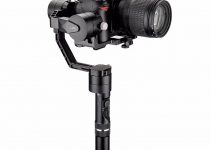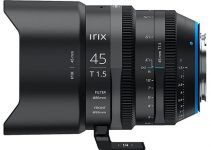At this point is is safe to say that the latest Macs equipped with the more powerful Apple Silicon chips are good. But just how good are they? The 16” MacBook Pro with M1 Max chip is the most powerful Apple laptop out today and it should be able to handle some seriously impressive video editing and color grading workflows. Time to try out some 6K and 4K raw video.
Filmmaker Justin Phillip put together some tests of his own on the new 16” MacBook Pro, specifically one with 32-core GPU and 32GB RAM, working in DaVinci Resolve 17 with 6K R3D and 4K Cinema DNG footage.
Two cameras were used to collect the footage. A RED KOMODO was used to capture the 6K R3D files and a Sigma fp recorded the 4K Cinema DNG.
As for the computer setup, Justin has three monitors setup for color grading and editing. He has two HP Dreamcolor monitors alongside the MacBook’s display.
That is putting a small bit of pressure on the computer before even getting to the editing. He is going to drop some displays to turn on screen recording which is another pressure on it.
Scrolling through the project with 6K R3D footage you can see that there are some decent grades applied. All the clips seem to have a number of nodes with edits, some with up to 11 nodes. All of them even have noise reduction and many have some power windows to go along with it.

Image Credit: Apple
Justin is working on a safer Full HD timeline to start but it isn’t running any timeline proxy resolution mode. This seems to make sure it runs smoothly in all cases, even with Fusion effects.
Moving over to a 4K timeline you are getting some stutters before the effects are able to render and cache. Outside the Fusion work, the grades and everything run perfectly smooth.
Next up is the 4K Cinema DNG file. These are interesting because even though it is a smaller resolution it is nowhere near as compressed and the files are multiple times larger which will strain other parts of the system, including RAM and storage read speeds. Being less compressed probably makes it easier for the computer to render.
Realistically with a couple tweaks you should be able to perform some serious editing on the latest MacBook Pros. These are handling raw footage in a way that would’ve been unimaginable for a laptop even a few years back. The M1 revolution is great if you are a Mac user.
The final exports are also done very quickly. The run time was about 5 minutes and the R3D version finished in just over 5 minutes while the Cinema DNG version took a bit over 3 minutes. Both are very impressive times.
Have you made the upgrade to one of the newest MacBook Pros?
[source: Justin Phillip]
Order Links:
- Apple 16” MacBook Pro w/ M1 Max (B&H)
- Blackmagic Design DaVinci Resolve Studio (B&H, Amazon)
- RED KOMODO 6K Cinema Camera (B&H)
- Sigma fp Mirrorless Camera (B&H, Amazon)
Disclaimer: As an Amazon Associate partner and participant in B&H and Adorama Affiliate programmes, we earn a small comission from each purchase made through the affiliate links listed above at no additional cost to you.




